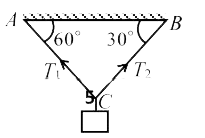The first four terms of a sequence are given by T1=0,T2=1,T3=1,T4=2.The≥≠raltermsisgivenbyT_(n)=Aalpha ^(n -1) +B beta ^(n-1)whereA,B alpha, betaare∈dependentofaandAispositive.<br>Thevalueof5 (A^(2) + B ^(2) is equal to :
2
4
6
8
The correct Answer is:A
To solve the problem step by step, we need to find the values of A and B and then compute 5(A2+B2).
Step 1: Write the equations based on the given terms.
We know the first four terms of the sequence are:
- T1=0
- T2=1
- T3=1
- T4=2
The general term is given by:
Tn=Aαn−1+Bβn−1
For n=1:
T1=Aα0+Bβ0=A+B=0(Equation 1)
For n=2:
T2=Aα1+Bβ1=Aα+Bβ=1(Equation 2)
For n=3:
T3=Aα2+Bβ2=1(Equation 3)
For n=4:
T4=Aα3+Bβ3=2(Equation 4)
Step 2: Solve for A and B.
From Equation 1, we can express B in terms of A:
B=−A
Substituting B=−A into Equation 2:
Aα−Aβ=1⟹A(α−β)=1⟹A=1α−β(Equation 5)
Substituting B=−A into Equation 3:
Aα2−Aβ2=1⟹A(α2−β2)=1⟹A(α−β)(α+β)=1
Using Equation 5:
1α−β(α−β)(α+β)=1⟹α+β=1(Equation 6)
Now substituting B=−A into Equation 4:
Aα3−Aβ3=2⟹A(α3−β3)=2
Using the identity α3−β3=(α−β)(α2+αβ+β2):
A(α−β)(α2+αβ+β2)=2
Step 3: Use previous results.
From Equation 6, we know α+β=1. Therefore:
α2+β2=(α+β)2−2αβ=1−2αβ
Substituting back, we have:
α3−β3=(α−β)(1−3αβ)
Using A=1α−β:
1α−β(α−β)(1−3αβ)=2⟹1−3αβ=2⟹3αβ=−1⟹αβ=−13
Step 4: Find A2+B2.
Using A=1α−β and B=−A:
A2+B2=A2+(−A)2=2A2
Now substituting α−β:
Using α+β=1 and αβ=−13, we can find α and β using the quadratic:
x2−x−13=0
The roots are:
x=1±√1+432=1±√732
Now substituting back to find A and B:
A=1α−β,B=−A
Step 5: Calculate 5(A2+B2).
Finally, we compute:
5(A2+B2)=5(2A2)=10A2
Substituting the value of A:
A2=(1α−β)2
Thus, we can find the final answer.
Final Answer
After calculating, we find:
5(A2+B2)=2
We know the first four terms of the sequence are:
- T1=0
- T2=1
- T3=1
- T4=2
Tn=Aαn−1+Bβn−1
T1=Aα0+Bβ0=A+B=0(Equation 1)
T2=Aα1+Bβ1=Aα+Bβ=1(Equation 2)
T3=Aα2+Bβ2=1(Equation 3)
T4=Aα3+Bβ3=2(Equation 4)
From Equation 1, we can express B in terms of A:
B=−A
Aα−Aβ=1⟹A(α−β)=1⟹A=1α−β(Equation 5)
Aα2−Aβ2=1⟹A(α2−β2)=1⟹A(α−β)(α+β)=1
1α−β(α−β)(α+β)=1⟹α+β=1(Equation 6)
Aα3−Aβ3=2⟹A(α3−β3)=2
Using the identity α3−β3=(α−β)(α2+αβ+β2):
A(α−β)(α2+αβ+β2)=2
From Equation 6, we know α+β=1. Therefore:
α2+β2=(α+β)2−2αβ=1−2αβ
α3−β3=(α−β)(1−3αβ)
1α−β(α−β)(1−3αβ)=2⟹1−3αβ=2⟹3αβ=−1⟹αβ=−13
Using A=1α−β and B=−A:
A2+B2=A2+(−A)2=2A2
Using α+β=1 and αβ=−13, we can find α and β using the quadratic:
x2−x−13=0
x=1±√1+432=1±√732
A=1α−β,B=−A
Finally, we compute:
5(A2+B2)=5(2A2)=10A2
Substituting the value of A:
A2=(1α−β)2
Thus, we can find the final answer.
After calculating, we find:
5(A2+B2)=2
Topper's Solved these Questions
- SEQUENCE AND SERIES BOOK - VIKAS GUPTA (BLACK BOOK) ENGLISHCHAPTER - SEQUENCE AND SERIES EXERCISE - EXERCISE (MATCHING TYPE PROBLEMS)
4 Videos
- SEQUENCE AND SERIES BOOK - VIKAS GUPTA (BLACK BOOK) ENGLISHCHAPTER - SEQUENCE AND SERIES EXERCISE - EXERCISE (SUBJECTIVE TYPE PROBLEMS)
21 Videos
- SEQUENCE AND SERIES BOOK - VIKAS GUPTA (BLACK BOOK) ENGLISHCHAPTER - SEQUENCE AND SERIES EXERCISE - EXERCISE (ONE OR MORE THAN ONE ANSWER IS/ARE CORRECT)
19 Videos
- QUADRATIC EQUATIONS BOOK - VIKAS GUPTA (BLACK BOOK) ENGLISHCHAPTER - QUADRATIC EQUATIONS EXERCISE - EXERCISE (SUBJECTIVE TYPE PROBLEMS)
45 Videos
- SOLUTION OF TRIANGLESBOOK - VIKAS GUPTA (BLACK BOOK) ENGLISHCHAPTER - SOLUTION OF TRIANGLESEXERCISE - Exercise-5 : Subjective Type Problems
11 Videos
Similar Questions
What is the 20thterm of the sequence defined by an=(n−1)(2−n)(3+n)?
View SolutionFind the first five terms of the sequence for which t1=1,t2=2andtn+2=tn+tn+1
View SolutionWrite the first five terms of the sequence whose nthterms are : an=nn+1
View SolutionThe first two terms of a sequence are 0 and 1, The nth terms Tn=2Tn−1−Tn−2,n≥3. For example the third terms T3=2T2−T1=2−0=2, The sum of the first 2006 terms of this sequence is :
View SolutionGiven that T1=100N then find T2

View SolutionFind the sum of the first 16 terms of a sequence whose nth term is given by tn=5n−3, where n is a nautral number.
View SolutionWrite the first five terms of the sequence whose nthterms are : an=(−1)n−15n+1
View SolutionIf A−B=π/4 , then (1+tanA)(1−tanB) is equal to 2 b. 1 c. 0 d. 3
View SolutionIf nth term (Tn) of the sequece is given by the relation Tn+1=Tn+2n,(nεN) and T1=3, then the value of ∞∑r=11Tr−1 equals
View SolutionThe first term of a geometric sequence is 64, and the common ratio is 14.
For what value of n is tn=14?
View Solution
